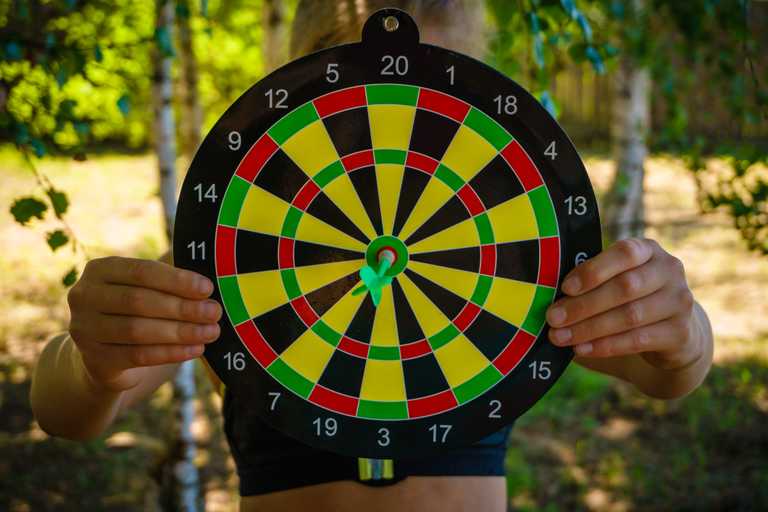How to Make More Accurate Estimates with Planning Poker
To run an effective Planning Poker session, you need to understand these ten best practices in order to produce high-quality estimates that remain accurate.

Planning Poker is largely regarded as one of the most accurate methods of creating estimates for agile teams. So, it’s no surprise that Planning Poker is also one of the most popular estimation techniques. However, Planning Poker sessions can go awry if an agile team does not follow best practices and avoid common pitfalls. But, if you’re aware of these best practices, you can ensure every Planning Poker session you conduct results in high-quality estimates.
In this article, we will guide you through best practices you should follow in all of your Planning Poker sessions to avoid common issues.
10 Planning Poker Best Practices for Accurate Estimates
When you have your next Planning Poker session, use these ten best practices to drive higher quality estimations and run a smoother session.
1. Only Invite Those Who are Working on the Project
The first step to a successful Planning Poker session starts before the session even begins. Only invite the team members who are actually executing the work being discussed in the session. When you include other individuals into the session, discussions can quickly become derailed by what the other individuals might want to discuss. It can also lead to votes from individuals who do not know what the work entails.
2. Stakeholders Cannot Vote but Can Veto
Any stakeholders or managers should not have a vote as their vote is often biased due to deadlines and personal preferences. However, managers and stakeholders should still have a voice during the estimation process as their experience matters. Usually, they’ve seen similar projects in the past so their opinions do matter. So, you can grant them veto power only when they believe the estimation should be increased to avoid any potential bias.
3. When There is a Close Tie Pick the Larger Value
After running enough Planning Poker sessions, you will run into a tie at one point or another. When this occurs, always pick the larger value. There is no need to rediscuss the story point if the two values are consecutive. Just pick the larger value and move on to avoid wasting time.
4. Limit Discussion About Technical Details
At the start of your Planning Poker session make it clear to all participants that any discussions about implementation and technical details must be limited to what is essential. Too often teams waste time by diving into the nitty-gritty details instead of focusing on the story points of the session. When discussing technical details, set a hard limit of one minute. At this point in a project, it’s not worth diving into the technical details. Instead, have each member figure out the simplest solution in their head and estimate based on that.
5. Use the “I Need a Break” Card Liberally
When playing Planning Poker, we tend to lose track of time. Once we lose track of time, we don’t even realize how long we’ve been working in the meeting. This results in mental fatigue causing inaccurate estimates from all members of the team. Before this occurs, someone needs to use the “I Need a Break” card. So, encourage participants to use the “I Need a Break” card liberally whenever they notice themselves or someone else in need of a break.
6. Limit Discussion Time
During each discussion phase, set a hard time limit on discussions. This ensures all participants maintain focus on the most important aspects of the discussion without bringing up tangential points. Keeping the focus of the session leads to higher quality estimates and avoids information overload so everyone can keep a clear head.
7. Choose the Larger Value when Consensus Cannot Be Met
Anytime consensus is not met after the third round of voting, just pick the largest value and move on. After the third round of discussion, it’s extremely unlikely that someone will be persuaded to change their vote so further discussions will not be useful. Instead of wasting more time, use the largest value to ensure the size is not underestimated and move on to the next story point.
8. Use a High-Quality Planning Poker Tool
A high-quality Planning Poker tool can make the entire process smoother. Tools such as Async Poker allow you to utilize in-depth customization features ensuring your Planning Poker session fits your team’s specific needs. It also allows your entire team to participate in the session regardless of their geographic location. Async Poker can even integrate into the Jira Mobile app so you can take your Planning Poker session anywhere you go.
9. Keep the Baseline Consistent
The baseline your team agrees on needs to remain consistent across iterations. You can always resize the baseline after a few story points have been discussed to ensure your baseline makes sense. But, it should not be changed constantly otherwise you will run into a form of scope creep except instead of the scope expanding, the size of your values will expand. This leads to less accurate estimates as the sizes increase.
10. Enjoy Your Planning Poker Session
While enjoying your work is always a great thing, Planning Poker sessions run smoother and generate more accurate estimates if every participant is enjoying themselves. By creating an enjoyable session, you inherently encourage every participant to maintain an active voice during discussion and feel as though their voice is heard. Taking each team members’ opinions into consideration is crucial to fuel this enjoyment. You could also order food during the session to open up the discussions further.
Takeaway
Overall, Planning Poker provides a fun and effective way for Agile teams to estimate projects. But, you must consider every aspect of the session to yield the most accurate results. This includes considering:
- Who you invite to the session
- Who can vote
- What to do when there is a tie
- Limiting discussion times
- Maintaining a consistent baseline
- Avoid diving into technical details
- Utilizing a Planning Poker tool
- And most importantly, enjoy the process
By keeping these best practices in mind during your next Planning Poker session, you can help your entire team engage in effective discussion and produce accurate estimates.

